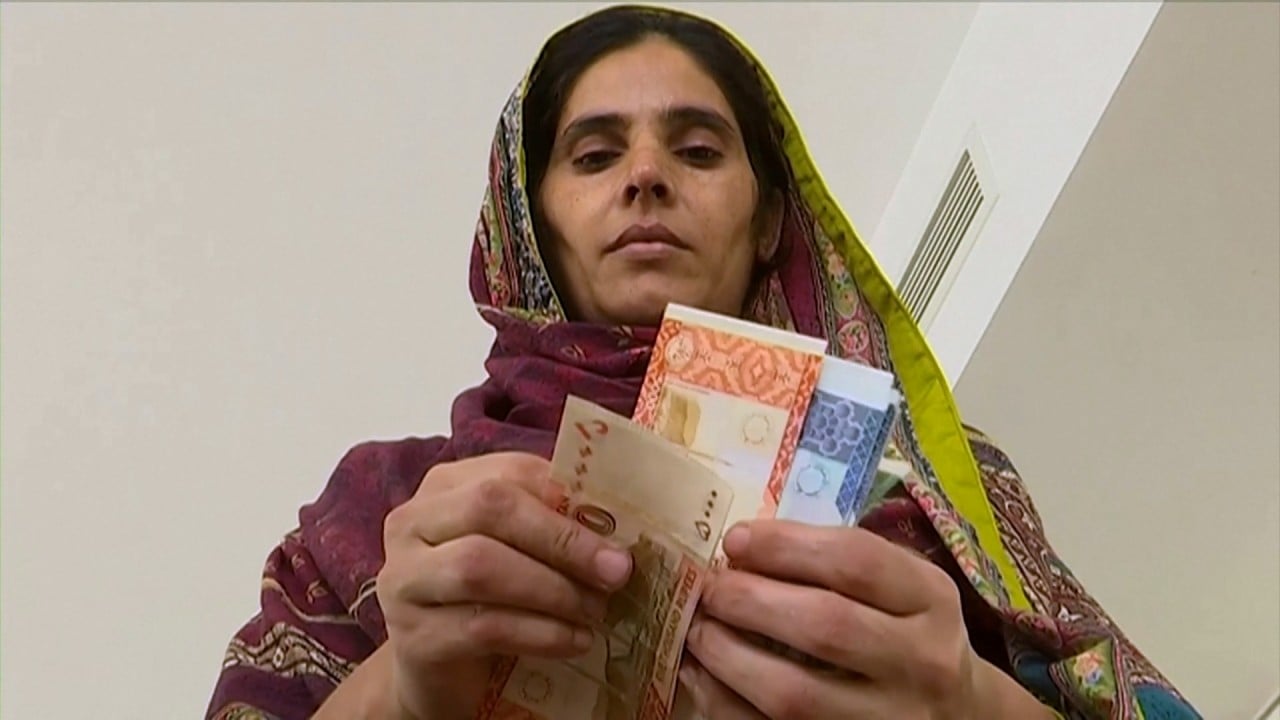
Cash-strapped Pakistan scores IMF financial aid win – but millions of people may face ruin, analysts say
- International Monetary Fund and Pakistan have agreed to resume support package, frozen in March when previous government refused to cut fuel subsidies
- But analysts say energy price hikes now will push more people into poverty and wreak havoc among 5.2 million small and medium-sized businesses
Millions more Pakistanis could be pushed into poverty and small businesses financially ruined after Islamabad agreed to eliminate energy subsidies to secure desperately needed international funding, analysts say.
Finance Minister Miftah Ismail said a “broad agreement” struck with the International Monetary Fund (IMF) on Tuesday “locked in” Pakistan’s budget for the financial year (starting July 1) and the Fund was beginning consultations with the nation’s central bank to set monetary targets.
After that, the agreement will be submitted for approval to the IMF’s directors.
It is a key step towards the resumption of IMF support to Pakistan under a 39-month, US$6 billion balance of payments support programme initially agreed in 2019, with disbursements beginning in July of that year.
Pakistan has asked the IMF to extend its support until June 2023 and also up the value to US$8 billion, to include the country’s 2022-2023 financial year.

Ismail said the understanding reached with the IMF on Tuesday evening would see Islamabad impose taxes on petrol that will further increase prices by about 20 per cent in the coming 12 months. Electricity and gas bills will rise too, he said.
Khaqan Hassan Najeeb, a former adviser at Pakistan’s finance ministry, said energy price hikes would also be devastating for the country’s 5.2 million small and medium-sized businesses (SMEs).
“SMEs are the actual fabric of our economy. While their ‘big brothers’ may be able to weather this storm relatively easily, it is the majority of these SMEs that are faced with an existential threat,” he said.
Prime Minister Sharif said last week he was “acutely aware of the impact” higher fuel prices would have on Pakistani consumers, who have been wrestling with double-digit inflation for more than three years.
But his government would continue to take the “tough decisions” necessary to avert a default on Pakistan’s international financial obligations, he said.
Foreign exchange reserves held by Pakistan’s central bank dipped beneath US$9 billion last week, barely enough to pay for a month and a half of the populous South Asian country’s imports.
Are China’s belt and road projects in cash-strapped Pakistan losing momentum?
The depletion of Pakistan’s forex reserves have caused the rupee to depreciate by 15 per cent against the US dollar over the last two months, compounding inflation imported from spiking international commodity markets.
“I have been observing the country’s situation for 30 years, but I’ve never seen such a situation in terms of inflation,” said Finance Minister Ismail, who is also a prominent businessman.
Pakistan’s fiscal deficit is on track to go beyond eight per cent of its GDP by the end of this month, so Islamabad simply does not have the money to continue spending around half a billion dollars a month on fuel subsidies, he said.
However, analysts said almost 80 per cent of Pakistan’s estimated 220 million people are vulnerable to the impacts of the removal of fuel subsidies because they live on US$5.50 a day or less – the World Bank’s poverty line for the lower middle-income class in developing countries.
Ukraine war fallout: Europe’s rush for LNG plunges Pakistan into darkness
The World Bank estimates that, overall, about 39 per cent of Pakistanis already live under that poverty line.
Yousaf Nazar, a political economist and ex-Citigroup executive based in Singapore, said “inflation might hit 20 per cent, in sharp contrast to the official target of 11 per cent”.
He warned that “some 10 million more people could be pushed below the poverty line”.
The government has previously said an agreement with the IMF would trigger the release of financial help already agreed in principle with key allies China, Saudi Arabia and the United Arab Emirates.
Beijing earlier this month accepted Pakistan’s request to roll over a US$2.3 billion commercial loan, subject to the IMF deal. The two countries on Wednesday signed an agreement finalising the arrangement.

In March, China also agreed to refinance US$4.2 billion of maturing commercial loans and a central bank deposit to support its friend’s foreign exchange position.
Nazar said the crippling inflation resulting from Pakistan’s deal with the IMF will worsen “economic stress, social unrest and political turmoil”.
But analysts agreed that the painful economic reforms were a necessary evil.
Depleted foreign exchange reserves, untenable energy subsidies, a record high trade deficit of over US$43 billion in the 11 months up to May, and spiking inflation “are clear and present threats” to Pakistan’s economy, Najeeb said.
Pakistan braces for 50-degree weather amid worsening heatwaves, climate change
“It is not about IMF demands, only; it’s more about doing what is required to ensure external solvency,” he said. “Second chances are rare.”
Nazar said Pakistan’s economy remained “highly vulnerable” to oil price shocks because of its high level of indebtedness and inability to generate higher foreign exchange inflows from its narrow export base.
Pakistan’s external debt as a percentage of GDP rose from 30 per cent in the financial year 2017-18 to 40 per cent in 2021-22, according to the IMF.
Najeeb said Pakistan’s macroeconomic challenges are structural. Its revenue system is unable to meet the government’s financing needs and, in the absence of substantial foreign direct investment, its consumption-led growth relies on foreign help and remittances from Pakistan’s diaspora.
“In the coming years, creating self-reliance through domestic revenue mobilisation will be key to Pakistan’s economic survival,” he said.


